Welcome to the history of the axe! The mighty axe is one of the oldest tools in the human era. Historians agree it originates from the Stone Age period.
Currently, it’s a multipurpose tool that serves roles in sports, religion, and even as a cutting tool. At least it helps us learn about the history of our ancestors and how they lived in those days.
TABLE OF CONTENTS:
History of the mighty axe
Perhaps, it is the moment to try and imagine what the modern world may look like without the Axe. Across the globe, people utilize it for various reasons. Maybe, you may value it differently from how others prefer to use it.
However, that doesn’t matter, provided it meets your current obligation. It’s therefore wise for us to try to learn and appreciate the long history of the Axe. Remember, it has a long history of evolution, meaning there is a considerable variation from the one made in the Stone Age and the modern one.
Let’s look at the evolution of the Axe from our ancestors to the present world.
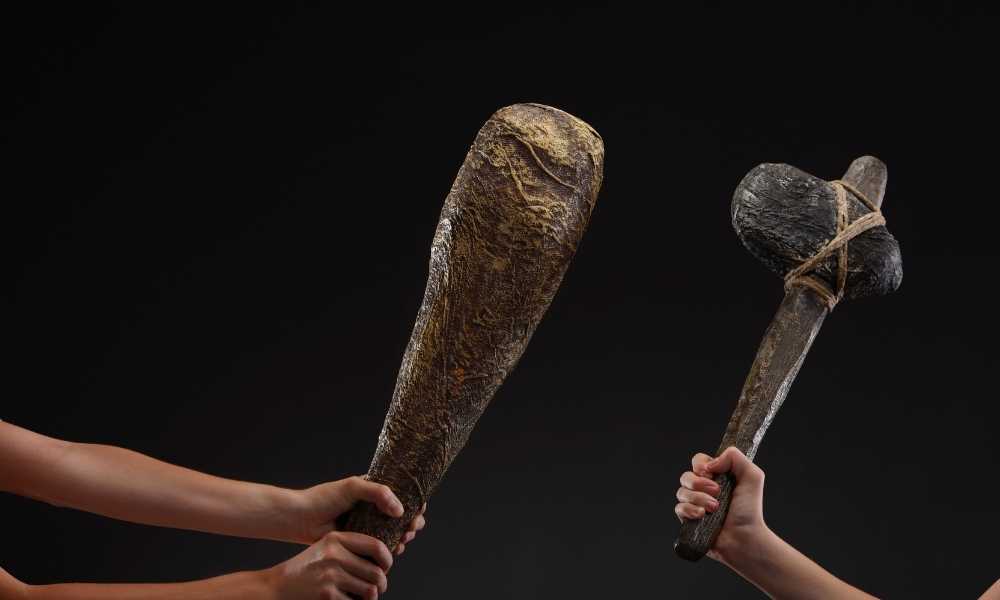
The Origin of the Axe in the Stone Age
Historians agree that the Stone Age marks the beginning of tool production. Remember, the term originates because most of the tools during that time stemmed from stone.
So far, historians have divided the Stone Age into two parts, namely, the early Stone Age and the Late Stone Age.
During the Early Stone Age
During this period, the only survival tactics were hunting and fishing. Historians agree that our ancestors started stone tools around 2.5 million years back to about 10,000 to 11 000 years in the Ice Age.
The Late Stone Age
Over time humans migrated from hunting and fishing to farming. Historians refer to it as the Copper Age. The oldest Axe during this period was the hand Axe.
Our ancestors used the hand Axe for digging tubers and butchering animals. Over time, they modified the design to accommodate arrowheads, knives, and scrapers.
Later on, they developed varieties of Axes after discovering a wooden handle. At least historians divide those Axes into two categories: Non-shaft-hole Axes and shaft-hole Axes.
Non-shaft-hole Axes are produced from slate, greenstone, or even flint. Remember, they did not have any holes to accommodate the handle.
On the other hand, shaft-hole Axes are produced to serve as ceremonial objects or even weapons and are built from various stones. For example, from 3200 BC to 1800 BC, Europe used boat Axes during battles.
The Bronze Age
The Bronze Age is believed to exist from 2000 BC to 500 AD. During this period, our ancestors replaced stone Axes with bronze and copper. Artisans cast the Axe in moulds allowing for mass production of the design.
The Amish cultures are the pioneers of the Bronze Age tools. The available bronze Axes are semi-circular shaped. There is also another one with an animal-shaped believed for ritual purposes.
During 1000 AD, the Luristan people emerged in North-West Iran. The settlement of these people occurred on three ranges, and they were mainly nomads.
Archeologists have acquired enough historical evidence to indicate the kind of lives such people lived. There are a lot of Bronze artifacts that have been obtained from that region. They contained sharp spikes indicating how Axes were important during wars.
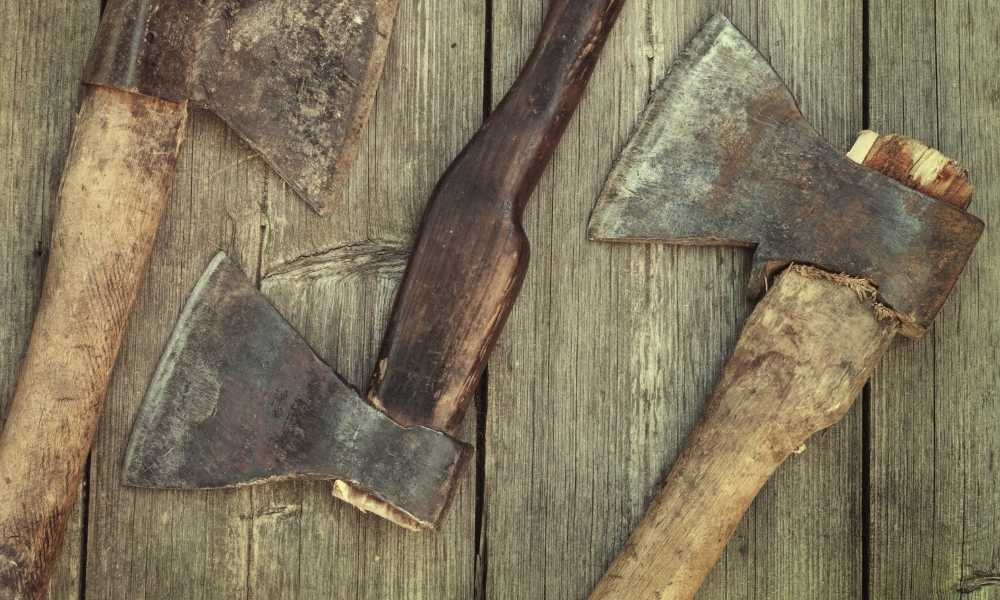
Categories of Axes
The available types in the modern world are carpenter Axes, felling Axes, and splitting Axes, among others. However, all these types are grouped into two major categories: single-bitted ax and double-bitted ax.
The Single-Bitted Axe
Most people are familiar with the single-bitted ax. It has two ends, one for cutting bit and the other one for the poll. At least you should not hammer with the poll of the ax as much as it looks like the harmer. Hammering might cause some severe damage to it.
During the mid-19th century, the curved design of the ax gained a wider usage. Initially, manufacturers produced it with a straight handle. Of course, there is no valid reason why manufacturers prefer straight handles to curved ones.
Related Article: Who makes the best axes in the world?
One debate argues that the curved handle generates more force on the user. However, that one alone is not sufficient enough because people have valid reasons to give explanations.
Some manufacturers prefer the straight handle ax in the modern world, whereas most prefer curved ones. The curved Axes have good looks, which makes most people like them.
You may use the single-bitted Axe to split good, buck, fell, and limbing medium-sized trees.
Double-Bitted Axe
The double-bitted Axe contains two cutting edges making it different from the single-bitted Axe. One edge is dull for chewing and limbing tough knots. The other edge is sharp to enhance fast and efficient slicing.
You may swing this ax in all directions thanks to its straight handle as a woodsman. You may also produce more power and speed due to the longer handles. Some theories suggest that this ax is very accurate compared to its counterpart.
All these explanations indicate that the double-bitted ax is very effective compared to other categories. Remember, the ax has enough balance because both ends contain equal weight and length.
But it is often good to have a clear purpose for clear-cutting several trees before purchasing this ax. Otherwise, you may have it for decorations within the house with no significant meaning.
Related Article: What is the best axe for cutting down trees?
Importance of the Axe
Perhaps some people might question what the Axe offers in the present world. As much as it is an ancient tool, it still has a significant role in the modern world.
People may prefer to use both chainsaws and Axes because they serve different roles. If one contains more giant trees, the chainsaw is the best because it accomplishes faster.
However, the Axe serves a precise role when there are lighter jobs. Let’s look at the importance of using the Axe in the present era.
First, the Axe is very safe. Of course, we may not rule out the possibility of experiencing injuries from Axes. However, the ax is better if we consider the dangers created by Axes and chainsaws.
Secondly, the Axe is very portable. We require a lot of fuel and time to move chainsaws since they are bulky. Axes are very light compared to chainsaws meaning one may carry them easily.
The Axe requires less maintenance. If you compare modern equipment like the chainsaw and the Axe, then the Axe is better. With a lot of resources, it wpild help you to maintain the chainsaw. However, the Axe doesn’t require expensive processes so long as you keep it sharp.
Related Article: Cheap vs expensive axe… What’s the difference?
It is tranquil when using it. When cutting wood, you need a calm environment to perform your task. Using equipment such as the chainsaw might kill this mood because it makes a lot of noise.
The Axe will provide the best moment to exercise. In the present world, people prefer to perform exercises in various ways. Copping good by using the Axe offers the space for one to have the best workout.
One requires little accessories with the Axe. It would help if you had eye protection and a sharpening file or stone to maintain the Axe. At least that one is affordable compared to chainsaws with huge accessories.
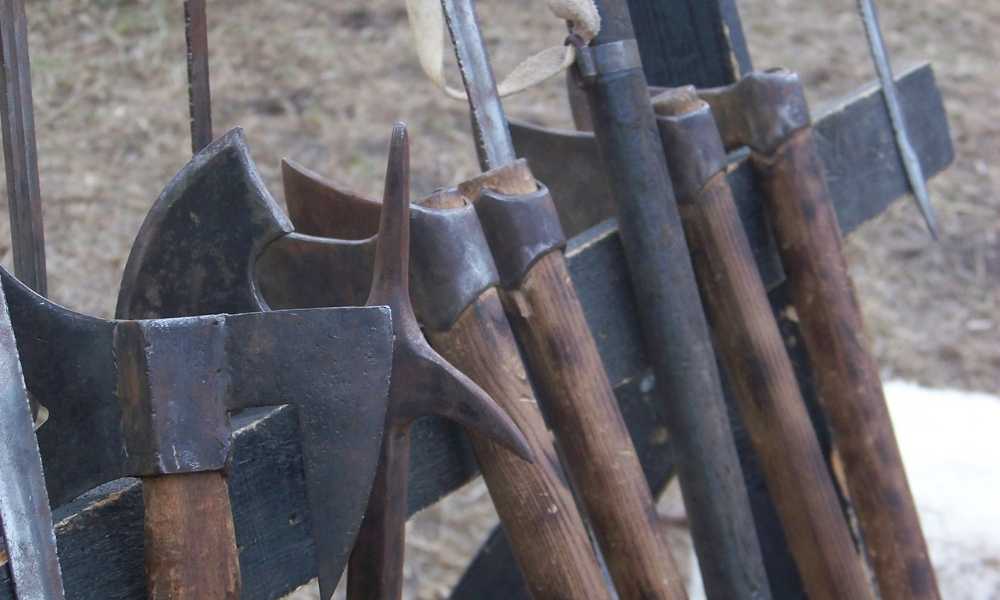
An Axe as a Weapon
The Axe is one of the oldest tools our ancestors used together with the spear and club for defense. During that period, Axes served a multi-purpose role as a tool and a weapon.
At least they served a clear role in self-defense since they were easier to hold and nearer to the body. But, over time, artisans preferred to modify the design and develop Axes specifically for combat.
During the Stone Age and Bronze Age, our ancestors produced Axes for combat. The throwing Axe serves as a projectile and contains a shorter handle.
At least they existed from 400 AD to 500 AD during the Great Migration to the Franks. Those used during the franks had small handles with sharp Axe heads.
Central European excavators discovered another Axe termed Franziska from 500 AD to 750 AD. Archeologists agree Franks were the first to use this tool, then the Burgundians later on. The Lombards acquired it and then left it for the Goths.
The Franziska weapon was good for maintaining a firm grip. If you were during this time, then you may not throw away your weapon and then stay unarmed facing the enemy.
Also, the Franziska weapon allowed for flexibility during hunting, where one throws it with higher precision and accuracy. If it did not hit the target, then on has enough time to recover before the animal escapes.
In 900 AD, the Viking emergency led to the crisis of the Axe as a weapon. During this period, the Axe was made of iron instead of bronze. At least manufacturers managed to design various shapes to support handlers.
Related Article: 28 Different axe types and what they’re used for
The bearded Axe is a famous Viking Axe. It is tall and contains curved blades to allow handlers to hook it to the opponent’s shield. Likewise, the handler may use it to disarm the enemy making the shaped blade cause injuries.
During the medieval era, Axes remained popular in the Middle East and Europe. The Islamic and Christian forces utilized Axes to support themselves during the crusaders’ war.
European armies used two types of Axes, one containing a smaller handle and the other one with a longer one. During this time, the army utilized particular Axes to destroy the opponent’s shield. At least they contained a blunt edge, shorter handle, and were heavier.

Axes in Religion
Over the years, various religions across the globe have utilized the ax to serve multiple purposes. According to the Chine Mythology, the world originates from the giant Pangu.
After birth, the giant took an Axe and divided the egg into two portions. The upper piece developed the heaves, and the lower portion became the earth.
In Hinduism, Ganesha has termed a deity. Followers of the religion believe the god helps them overcome obstacles and has enough wisdom. Ganesha contains an enormous stomach through which he holds the universe.
One fun thing is that the deity contains the Axe in one hand. It serves as a symbol to tie followers to the world.
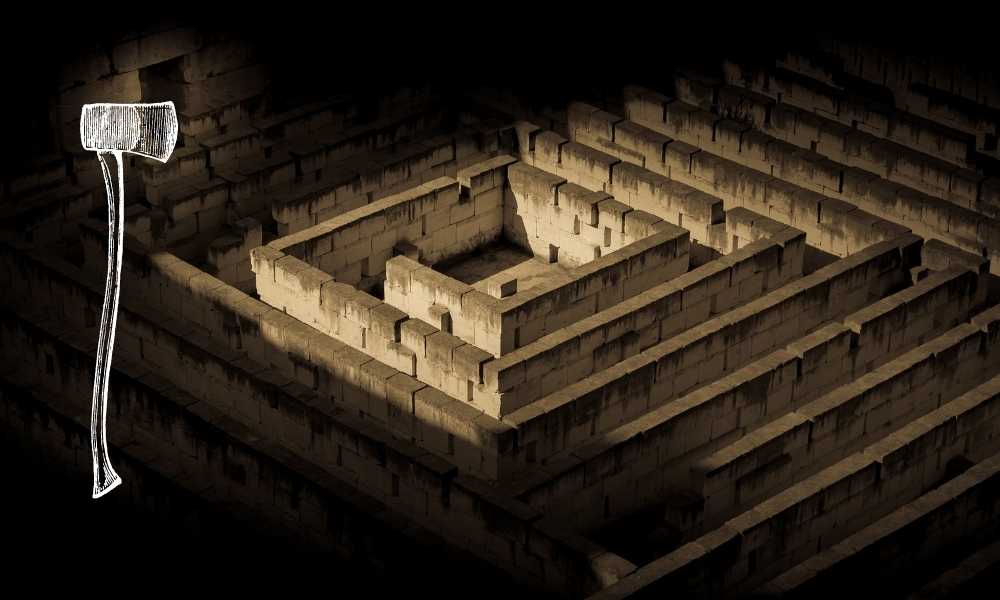
An Axe as a Symbol
Throughout our human history, the Axe has had a symbolic definition of our existence—it emergences from the stone age when boat Axes served as a symbol.
For example, in 2500 BC, the Minoan culture expanded in Knossos. You will find Knossos on the modern-day Greek island. Knossos was termed an influential center in the eastern Mediterranean region during that time. The dynasty existent at that time lived at the Labyrinth palace.
Labyrinth’s terms had a hidden meaning termed “House of the Double Axe.” Archeologists have discovered pictures of double-headed Axes. The double-headed Axe had a significant role in shaping the Minoan culture and signified power.
The Nordic region utilized the battle-ax to signify rank and power in the Viking Age. They decorate those Axes to help portray their values and significance.
The military uses the Axe as a symbol in its jurisdiction. Previously, the uniform of the provost marshal contained a symbolic Axe. The role of military woodchoppers and sappers was to hold an enormous Axe to signify their solidarity.
If you visit the Swedish history museum, which is located in Stockholm, you will identify the double-headed Axe. It is produced from clay and coated with gold. Of course, this would not have served as a tool because clay is not that strong.
Related Article: Can an axe be too sharp?
It was a cult symbol, which signifies the circle of life that we humans go through. Remember, the crescent moon wax and wane. That means you can use that analogy to depict that the two blades present in the Axe signify our birth and death.
The lector used another symbol in the Roman Empire, holding fasces containing a broad Axe. This fasces symbolized that there was power to punish within that empire.
Holding the broad Axe high meant the power for execution. On the other hand, fascism originates from fasces when Mussolini adopted them to enhance his movement.
Nowadays, we can see fasces in Norwegian and Swedish polish. Also, they are present in the French court of arms.

The Axe for Execution
In the earlier ages of our ancestors, they executed criminals and law offenders. Can you imagine if you existed during that time? How horrible would that be?
For many years, the sword was used to execute in Europe. However, the broad Axe began to take over for beheadings in the middle ages over time.
For example, during the 18th and 19th centuries, the broad Axe was used for beheadings in Sweden. Historians confirm that John Filip Nordlund is the last murderer to be executed by the broad Axe.
How the Forestry Industry Transformed the Axe
The production of Axes was on a small scale before the industrial age. Manufacturers developed the design based on the craftsmanship of the developer, its function, and the handler’s requirements.
Before the mid-19th century, farming communities and artisans used Axes to handle small-scale jobs. However, the emergency of industrialization brought aggressive logging, which increased the demand for Axes.
Axe manufacturers were pressured to produce Axes on a large scale to meet the growing demand from forest workers and forestry companies. The higher demand lowered the costs of production for manufacturers.
However, since the introduction of the chainsaw, the demand for an Axe to cut mass trees has gone down. Perhaps it is because one may think that it takes a little bit longer to cut several trees.
Related Article: Top 10 best rated splitting axes ever!
Of course, that argument has some truth because a chain saw is faster in cutting several trees. But if you are trying to have fun during the woodwork, choosing the Axe is the best thing for you.
It handles the process of cutting small wood effectively, and also, you don’t have to purchase expensive gears to operate it. On the other hand, it will provide the best moment for exercising.
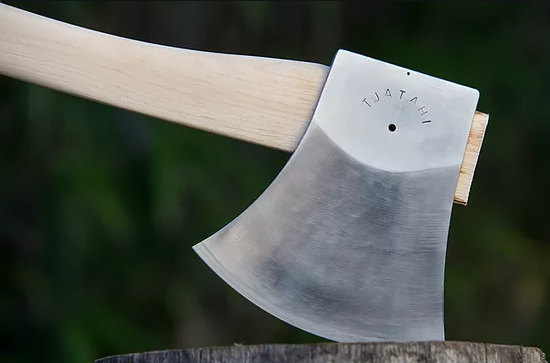
Axes in the Modern Era
Many Axes are made of wooden hands and steelheads in the modern age. They are predominantly in Europe, Asia, and the US and are categorized in form, use, and size.
Hand Axes, hatchets, or scout Axes contain short handles for usage with one hand. So far, you may use them as a tool for cutting trees, acting as weapons, and for sporting activities.
The advent of chainsaws has improved the forestry industry meaning users no longer depend on Axes. However, you are deluded if you only think that Axes only serve as tools. Nowadays, it acts as a multipurpose tool in various fields.
The emergency of the Backyard Axe Throwing League has transformed the idea of the Axe. Nowadays, the masses enjoy urban Axe throwing as a sport.
This sport dates back to 2006 when bored friends engaged in throwing an ax at a stamp. However, they did not know that their fun moment would emerge into a serious sport one day.
Later on, the sport’s founder invited friends to demonstrate how to have fun when throwing an ax at the wood. That became even more interesting as more friends continued to come every week to enjoy ax throwing.
Related Article: Top 5 best American felling axes
After some time, Matt began to host an entire league containing more than 60 fans. At least they began to enjoy the fun of the sport and how participants engaged in it.
With time, the number of spectators became massive, and that one alone invited complaints. You can imagine having a lot of spectators in your backyard and the amount of noise they will produce. Some of your neighbors may feel infringed on their privacy.
Information spread throughout the city that the league is growing by the day. Batt moved to Toronto and acquired an industrial space for indoor operations. That allowed the league to operate four nights a week. Then, he progressed to open 13 locations for hosting the league.
If you prefer to enjoy the thrill of Axe throwing, this is a massive moment to join the league.
Conclusion
The Axe has gone through a transition period since our ancestors discovered them in the Stone Age. They have evolved from the stone until now; they are made from iron.
The primary purpose of producing the first Axe was to serve as a tool for digging, cutting wood, and killing animals. Those created during the Stone Age had shaft holes, whereas others did not.
When we look at those with shaft holes, they appear more functional than those without them. Perhaps, you are holding your Axe right now and imagining how things looked like during our ancestors’ time.
Maybe they lived the best moments of their lives while hunting with those archaic tools. Anyway, we need to appreciate where we have come from as far as the evolution of the Axe is concerned.
If you observe the previous Axe and hammer, it would be hard to identify the differences. However, during the bronze and iron ages, some huge discrepancies appeared between the harmer and the Axe.
Designers of the Axe pronounced the blade and made it thinner while they flattened the face of the hammer. At least during the Bronze Age, they managed to perform a mass production compared to the Stone Age.
Initially, you may not have noticed the difference between the iron and bronze Axe. However, the notable difference was that iron would be converted into various shapes and versatile.
Over time, artisans advanced their skills and produced advanced Axes made from steel. The Axe has served various purposes throughout our lives. It was used to signify authority in some kingdoms.
Perhaps, you are among those still thinking that the Axe is used for cutting and digging. Remember, in the modern world, it has evolved into a sport. Many people have enjoyed the axing sport since its advent about 16 years ago.
That has eliminated the notion that the Axe is for digging, cutting, and other farm-related activities.
Nowadays, people can appreciate this tool which signifies our human greatness.

Leave a Reply